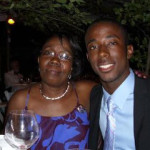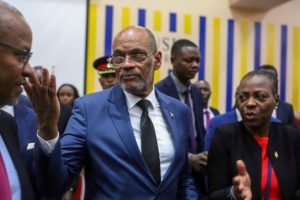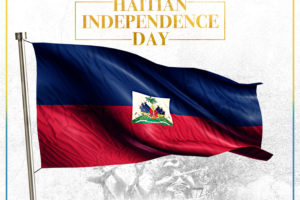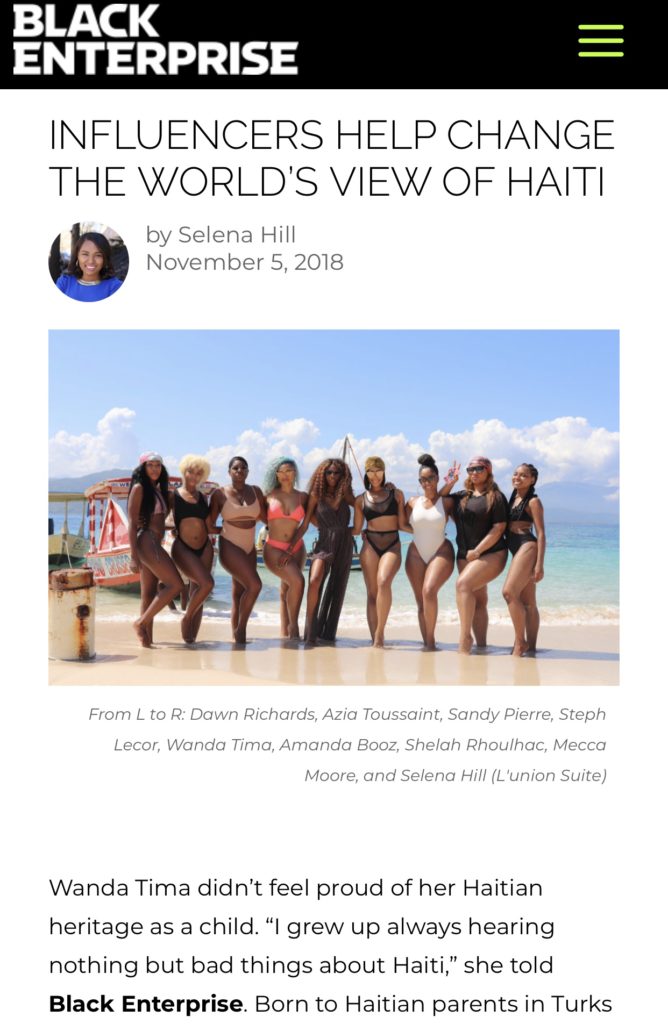
According to the HuffPost:
Six days a week, the rail-thin athlete sets off at daybreak, his neon-green running shoes glowing in the grey light of dawn.
It’s hard not to notice Astrel Clovis. He’s one of the only runners ever seen in Port-au-Prince, where there are few sidewalks, let alone bike lanes, and major thoroughfares seemed more pothole than road even before disaster struck this city three years ago. Like virtually all Haitians in the capital of 3 million, the runner’s life was disrupted by the catastrophic earthquake on Jan. 12, 2010. But a month later he was back on the streets, resuming his routine along with the rest of the country. His daily run is a tour of a capital on a slow mend, a jaunt past what has been accomplished so far and what remains to be done. Clovis starts in the hills above downtown, donning his running shorts and second-hand shoes inside a plywood shed that passes for home on a ledge that overlooks a ravine in Petionville. Outside, Clovis winds his way through an obstacle course of stray dogs and pecking chickens, parents escorting uniformed school children, sagging trucks, and swerving drivers. For all the hardship tied to this capital and country, running long distances has helped the 42-year-old mechanic reclaim a measure of hope.
“Running,” Clovis says, “is a continuation of life.” Clovis has run the hills and streets of Port-au-Prince for the past 10 years. He decided to take the sport seriously after he entered a race in downtown Port-au-Prince on a whim – and won. “That is what pushed me to run,” he says in his native Creole. “I felt special.”
Clovis, a serious, church-going man, isn’t one for small talk. He repairs generators, an important skill in a city that still lacks reliable power much of the time. He brings in a little extra cash running 5 or 10 K races, so compared to his neighbors, he’s relatively well off. He pays $475 for two-years rent on his one-bedroom shed, one of thousands of temporary shelters aid groups built after the quake — that were then claimed by “landlords” who charge for them. His fiance will join him there in March, when the couple will get married.
As Clovis starts to run, he trots past some of the remaining encampments that sprouted throughout the city after the earthquake and still house nearly 360,000 people. He ignores the choking charcoal smoke of cooking fires that starts to fill the air. He passes the Royal Oasis, a towering hotel and shopping center that a local business magnate began building before the earthquake, and is now finished thanks to an investment of $2 million from a foundation created by former U.S. Presidents Bill Clinton and George W. Bush. He checks his watch. Clovis typically runs a 7-and-a-half-minute mile, his breathing easy and his stride smooth.
Before the quake, he shared a three-bedroom house with his aunt and cousins, and dreamed of running his first marathon. The quake destroyed that house, along with about 100,000 homes across the capital and southern Haiti. The government put the death toll at 316,000, but no one knows how many people died. Clovis was lucky. He didn’t lose any relatives, or close friends – or his marathon dreams. In a country where good health is a luxury, running keeps Clovis strong. He clocks about 75 miles (120 kilometers) a week. Five minutes into his run, he sees several new shops that serve the wealthy Haitians and foreigners who live in Petionville. One recent arrival is an Irish pub, serving pints of Guinness for $8 – out of reach for the 70 percent of the population that gets by on $2 a day or less.
Sloping down the mountain on John Brown Boulevard, Clovis passes the turnoff to the Hotel Montana, which collapsed during the quake, killing nearly 70 people. It has since reopened. A side road leads to what was once the headquarters of the U.N. peacekeeping mission, a former hotel that pancaked to the ground. More than 100 died in the heap of twisted steel and dusty concrete, the highest death toll for a single incident in the history of the world body. There is a vacant lot there now. Governments around the world have spent about half of the $5.3 billion pledged for Haitian reconstruction. Most of the rubble is gone; there are two new sewage treatment plants north of the capital and a few homes; the U.S. built a new parliament building. Clovis, like many Haitians, said he expected more progress but he’s not bitter.
“I’d like to see more but I’m not discouraged,” he says. Gliding down the hill he passes roads that lead to the municipality of Delmas, a scene of horror after the quake. There, people with makeshift tools and bloodied hands scratched at what had been schools and homes, looking for survivors. The big Caribbean Supermarket was packed when the quake hit, just as people were getting off work for the day. It is an empty lot today. Clovis breezes past. The piles of corpses were removed within weeks of the quake. Thankfully, the white stalk of an occasional bone is a rare sight now. More than 60,000 survivors from Delmas eventually made their way to the grounds of a golf course and country club along a canyon at the edge of Petionville. Their numbers are down to about 14,000, thanks to rent subsidies from an aid group founded by Sean Penn. About 45 minutes into his run, some five miles down the mountain, Clovis is in downtown Port-au-Prince, at the National Palace. After the quake, its collapsed domed roof symbolized a country in defeat. A beggar’s stump, someone called it. Another empty lot. The expansive Champs de Mars across the way, with its thousands of devastated families, was in danger of becoming the capital’s newest and most massive slum. Most of the people who once camped here have moved on, many edged out with payments from the government or threats of eviction from landowners.
At the National Palace, Clovis turns around. Traffic is much worse and the road back home looks like a giant parking lot. It is a tough slog up the mountain but Clovis is game. Just after Christmas, Clovis heard about a marathon in the Dominican Republic, which shares the island of Hispaniola with Haiti. A friend drove him to Santo Domingo to run his dream race. His first marathon. It took him 2 hours and 42 minutes. That’s a six-minute-and-10 second mile. The newspaper recorded his score, even though his name was misspelled. But Clovis doesn’t care. He is running toward his new dream. He hopes one day there will be a marathon in Haiti and he will get a chance to compete, and win, at home.
“I would like the world to know,” he says, “that Haiti has a very talented runner.”



















